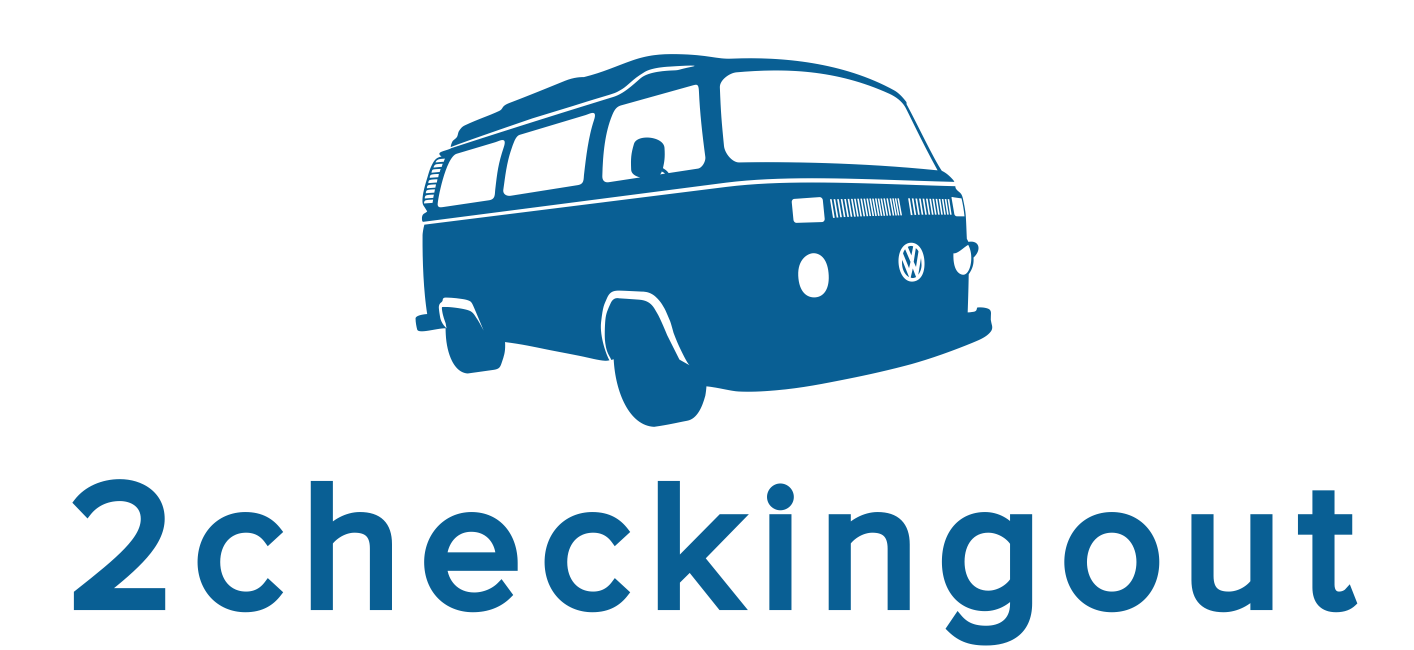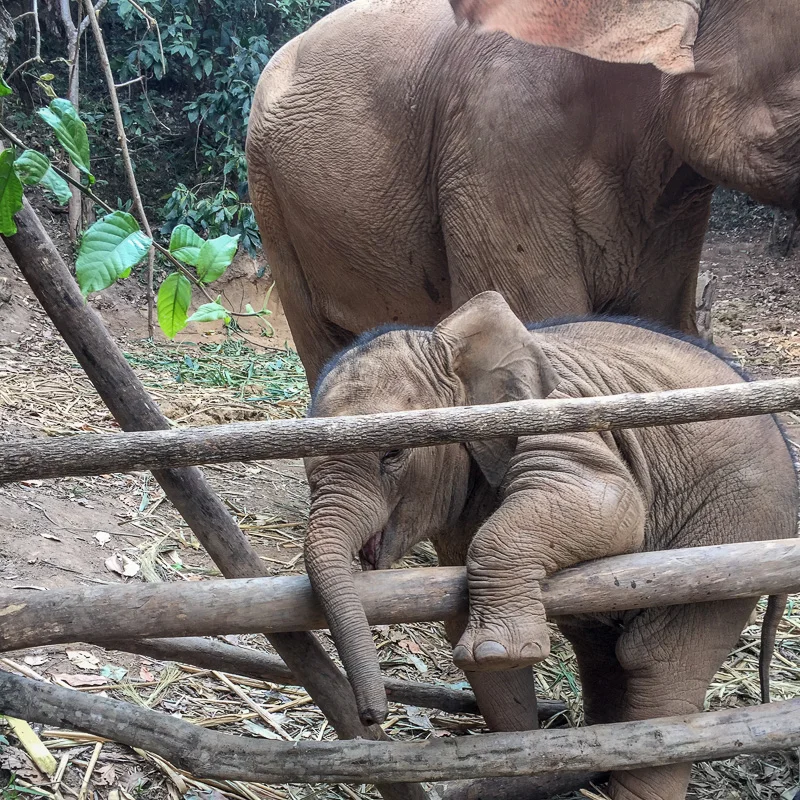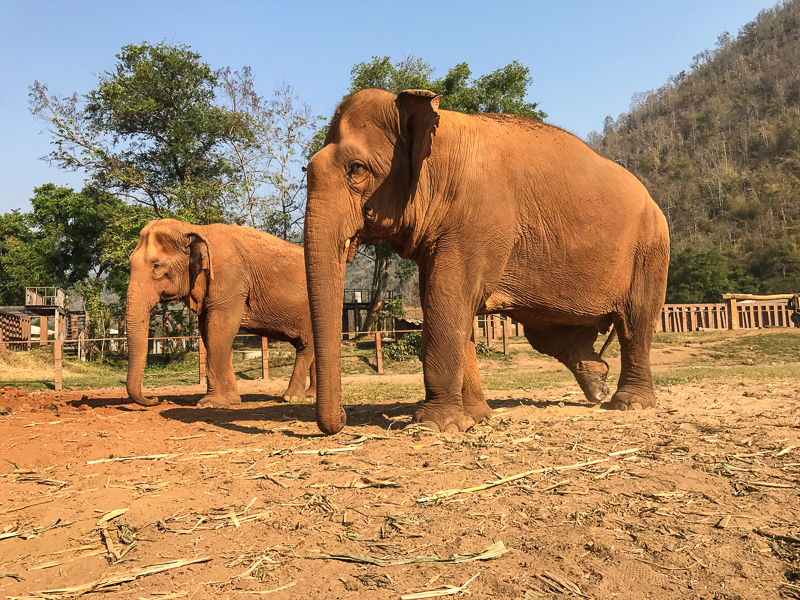Want to Ride an Elephant? How to Choose an Ethical Alternative and Why.
What’s on your bucket list? See the northern lights in Iceland? Trek to Machu Picchu? Swim with dolphins in Mexico? Ride an elephant in Thailand?
Everyone has a list. Whether it's stored in the back of your brain or pinned on the fridge with ticks against it.
But do we take the time to check if our dreams are actually ethical? Most people who want to swim with dolphins or ride an elephant want to do so because they love animals. But many don't realise that their once-in-a-lifetime experience is anything but that for the elephant or the dolphin.
I've been there. I didn't know better. I do now. Knowledge is a powerful thing as they say. This article is to give you knowledge and power to make an ethical choice when picking an elephant experience for your bucket list.
So exactly what does ethical mean?
Ethical tourism, also called responsible tourism, mean thinking about the consequences of your actions as a tourist on the environment, local people and local economy. Not only thinking about it, but acting on it. We have a choice on how, when, and where we spend our tourist dollars.
When it comes to elephants, it means choosing an experience which allows the elephant to exhibit its natural behaviour in a safe and non-threatening environment. It means the elephant has access to food, water, shade and dust or mud.
Why does it matter?
Many Trip Advisor reviewers rave about their elephant experience. How the elephants 'seemed' happy. But the well hidden secret of elephant tourism, and that includes circuses, zoos, trekking camps, shows and street begging, is 'the crush'. Have you ever wondered how one small man can make an enormous elephant paint a picture, stand on its head or allow people to ride on its back?
The answer is something called the crush, or Phajaan in Thailand. Other countries have different names but the process is the same. The vast majority of elephants you see in elephant tourism have experienced it. Stolen from its mother in the wild, the baby elephant aged three to six years old is confined in a small wooden frame no bigger than its body. Where it will be shackled by chains or ropes. Where it will be beaten with a bamboo stick with nails in it. Where it will be bludgeoned with a bull hook (imagine an ice pick with a wooden handle). Where it will be deprived of food and water. For at least a week. Until its spirit literally breaks. Until it no longer recognises its mother. And its mother doesn't recognise it.
The baby elephant is now ready for training. This again can be brutal, particularly when training an elephant to do something very unnatural, such as painting or circus tricks.
Heartbreaking isn't it? I have tears in my eyes just writing this. I was sobbing when I saw a YouTube video of a crush. It's not something you would imagine. But it happens to almost every single elephant you see at a circus, in a zoo, in a trekking camp or at an elephant show.
But don't despair, you can still have an amazing once-in-a-lifetime elephant experience which is ethical for the elephant too.
How to choose an ethical elephant experience
The Truly Wild Experience
The most ethical of all experiences is to watch wild elephants in their natural habitat. Elephants who have never experienced the crush. You will feel a vibrant energy from them. The 'wildness' I guess. There is nothing quite like it when a giant bull elephant strides straight towards your jeep as you beat an adrenal-charged retreat!
When choosing this kind of experience:
Look for a guided jeep tour where you can watch from a safe distance
Avoid 'safaris' that offer riding
Research carefully 'elephant orphanages' as babies are often poached from the wild
The Next Best Thing
Sanctuaries which rescue abused elephants from tourism or illegal logging are the next best option. Genuine sanctuaries will allow elephants to live out their days in as close to a wild environment as they can. Elephant Nature Park (ENP) in Thailand and its partner programmes across Thailand, Cambodia, and Myanmar excel at this. Here tourists can feed and bathe elephants. There are no bull hooks and training is done with positive reinforcement.
Depending on how adventurous you are, you can also volunteer for a week. We have volunteered at both ENP and Journey to Freedom. It's a great way to give your love (and tourist dollars) to rescued elephants. You also get to immerse yourself in elephant life, learning about the herd, and watching intricate behaviours. The time six-month-old Kili tried to sit on my lap as she learned to climb a dusty slope still brings a broad grin to my face even now. More here.
When choosing this kind of experience:
Look for camps that offer no riding, no shows, no performances
Avoid any camps that offer 'mahout training' as this often includes bare-necked riding
Research carefully the use of bull hooks as this isn't always clear. If in doubt ask directly how the camp trains its elephants
Will it really be as good as riding an elephant?
Research shows that an elephant's spine is not designed to carry a heavy load. It is not structured in the same way as a horse for example. The 'howdahs' or saddles fully-laden with tourists can weight between 300-500 kg. Also, sat up there how are you sharing a beautiful moment with such a majestic creature?
Instead you could be sharing moments like these:
A note on other elephant experiences
Street begging, elephant painting, any kind of shows - please avoid them. I know it is difficult to walk away as you want to help the elephants but the best way to help them is to not hand over money or food. This perpetuates the elephant's misery and encourages more elephants to be used in this way.
Final note
Don't be too hard on yourself. We have all been there. We don't know what we don't know. But you know about elephants in tourism now. Time to update that bucket list? How about changing 'Ride an elephant' to 'Feed an elephant bananas by hand' or 'Hike into the jungle and watch an elephant devour a banana tree'?
The more we choose ethical experiences, the more it encourages non-ethical camps to change.
Enjoy your elephant experience. If it is anything like mine, it will be more than a once-in-a-lifetime thing. As elephant time becomes quite addictive!
Useful links to further your elephant education
http://www.elephantexperts.org/index.html
https://www.thailandelephants.org
http://www.bornfree.org.uk/animals/asian-elephants/
https://landlopers.com/2014/08/18/elephant-rides (An interview with Diana Edelman, from the Save Elephant Foundation).














